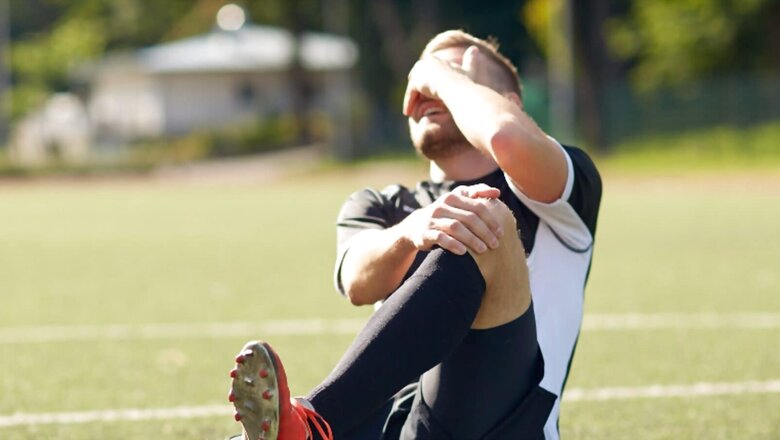
views
Sports injuries are extremely common and will affect approximately 21% of active adults. In the case of young athletes, approximately 44% will suffer an injury at some point in their athletic careers. Sports injuries can range from mild to severe and are classified as Acute (sudden) or chronic (long standing).
ACUTE INJURIES
1. ACL Tear:
The ACL(anterior cruciate ligament) connects the femur to the top of the tibia. It is the most injured ligament in the knee. ACL tears can be noncontact or indirect contact or contact in nature.
PREVENTING A TORN ACL:
An ideal ACL tear prevention program consists of stability, plyometrics, and strength training components. The stability component should be focused on enhancing neuromuscular control, dynamic joint stability, proprioception, balance, and single-leg training.
2. Meniscus Tear:
The meniscus is a piece of cartilage that sits between the femur and the tibia providing a cushion to aid in shock absorption. A meniscus tear is the second most common knee injury behind ACL tears
PREVENTING A TORN MENISCUS:
Maintaining optimal movement patterns, thorough warm-ups, maintaining a healthy weight, good flexibility, and strength in the hip extensors, knee flexors, and knee extensors can go a long way towards the prevention of this injury.
3. Ankle Sprain:
Sprains are simply a stretching or tear in one more ligament .They commonly occur in the ankle, knee, wrist, or thumb, though ankle sprains are most common.
PREVENTING ANKLE SPRAINS
Neuromuscular training programs to correct ankle instability can go a long way towards the prevention of an ankle sprain or re-injury. A ankle injury prevention program will contain elements of flexibility (to restore normal range of motion), agility, balance, plyometrics, and strength training .
4. Strains/ Pulled Muscles:
A strain is described as tearing in the muscles or tendons that anchor those muscles to bone. Although muscle strains can occur anywhere, the most common muscles affected in athletes are muscles of the calves, hamstrings, quadriceps, or rotator cuff because they are subject to frequent acceleration and deceleration.
PREVENTING PULLED MUSCLES
Proper warmup, optimal movement patterns (including muscle flexibility), good core stability, and good control over movements are the best ways to prevent muscle strain
5. Bursiti:
A bursa is a fluid-filled sac located next to the tendons in some of the major joints which helps to reduce the friction of the joints moving.Bursitis is the term that describes inflammation of the bursa sac and can occur in any of the bursa sacs, but most commonly in the hip, knee, shoulder, ankle, or elbow.
PREVENTING BURSITIS
Training programs that focus on joint stability can be very helpful in preventing bursitis as well as proper periodization, paying close attention to clients/athletes at risk for overuse injuries.
Read all the Latest Lifestyle News here

















Comments
0 comment